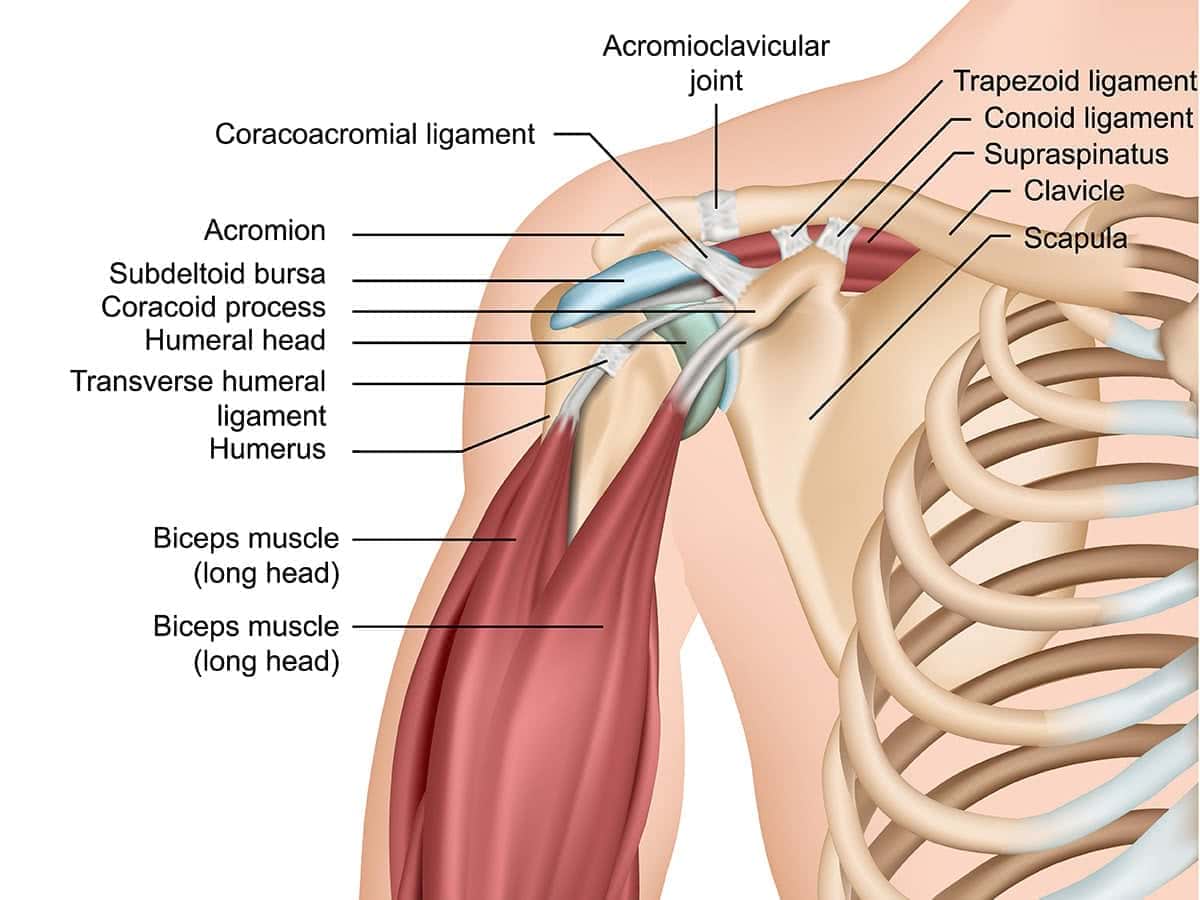Introduction
A tendon is a fibrous band (composed of collagen and white in colour) which connects a muscle to a bone. Sometimes tendons sustain injury or damage, which in turn causes pain. The term 'shoulder tendinopathy' describes any type of injury to tendons in the shoulder, whereas other terms refer to specific injuries – 'tendonitis' (sometimes spelled 'tendinitis') is where very small tears ('ruptures') in the tendon cause acute inflammation, and 'tendinosis' describes a form of degeneration of the tendon where there is some change to the structure or composition of the tendon, such as the development of scar tissue, generally from overuse.

Causes
Most cases of shoulder tendon pain are caused by the development of very small tears over time in tendons that are part of the rotator cuff or biceps. This is generally due to shoulder joint overuse (see also rotator cuff tears), although direct trauma to the shoulder may also cause shoulder tendon pain.
Other potential causes include 'rotator cuff impingement' where a tendon in the rotator cuff repeatedly rubs against the acromion (a bony projection from the shoulder blade) during shoulder movement and becomes inflamed, and bursitis, which is where a small fluid filled sac called a bursa becomes inflamed (a bursa is a form of 'cushion' between bones and nearby soft tissue).
Finally, the biceps tendon (or long head of the biceps tendon) which passes through the shoulder joint may be responsible for a significant amount of pain (see also biceps tear). This tendon may become inflamed through overuse by doing overhead activities causing pain in front of the arm.
Symptoms
In addition to general pain in the shoulder, problems with tendons in the shoulder may also cause:
- Pain in the arm down to the elbow.
- Loss of strength in the upper arm / shoulder.
- Tenderness.
- Clicking or crunching sound in the shoulder when raising the arm to shoulder height.
Tests / Diagnosis
The first stage of diagnosis is a physical examination as well as a review of medical history. This may be followed by imaging via x-ray, ultrasound or MRI or a combination of these. X-rays will not show any damage to tendons but will detect any change in the shape of the shoulder blade which may be causing problems with the rotator cuff tendons. Ultrasound allows the tendons themselves to be assessed during movement and an MRI scan produces very detailed images of bones and soft tissue, where further analysis is required.
Treatment
Initial treatment of shoulder tendon pain is the RICE protocol (Rest, Ice, Compression, Elevation) and avoiding any activities which cause or aggravate the pain. See Soft Tissue Management. Pain medication and gentle stretching and strengthening exercises should also help. Where shoulder tendon pain continues after these approaches, surgery may be an option such as Biceps tenodesis or Rotator cuff repair.
Related Information
Biceps tear
Biceps Tenodesis
Rotator cuff repair
Soft Tissue Management

